Abstract
Estimates of observer agreement are necessary to assess the acceptability of interval data. A common method for assessing observer agreement, per cent agreement, includes several major weaknesses and varies as a function of the frequency of behavior recorded and the inclusion or exclusion of agreements on nonoccurrences. Also, agreements that might be expected to occur by chance are not taken into account. An alternative method for assessing observer agreement that determines the exact probability that the obtained number of agreements or better would have occurred by chance is presented and explained. Agreements on both occurrences and nonoccurrences of behavior are considered in the calculation of this probability.
Keywords: observer agreement, probability-based formula, recording and measurement techniques, time sampling, reliability
Full text
PDF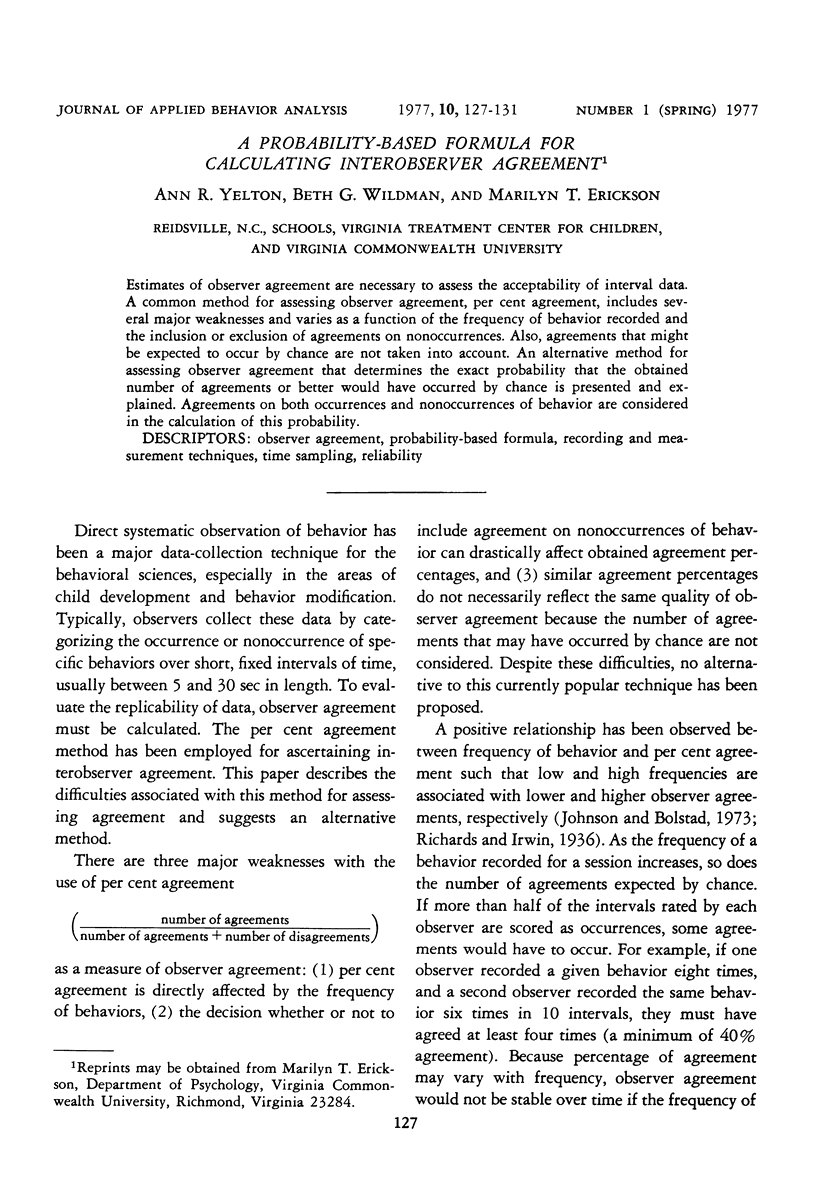
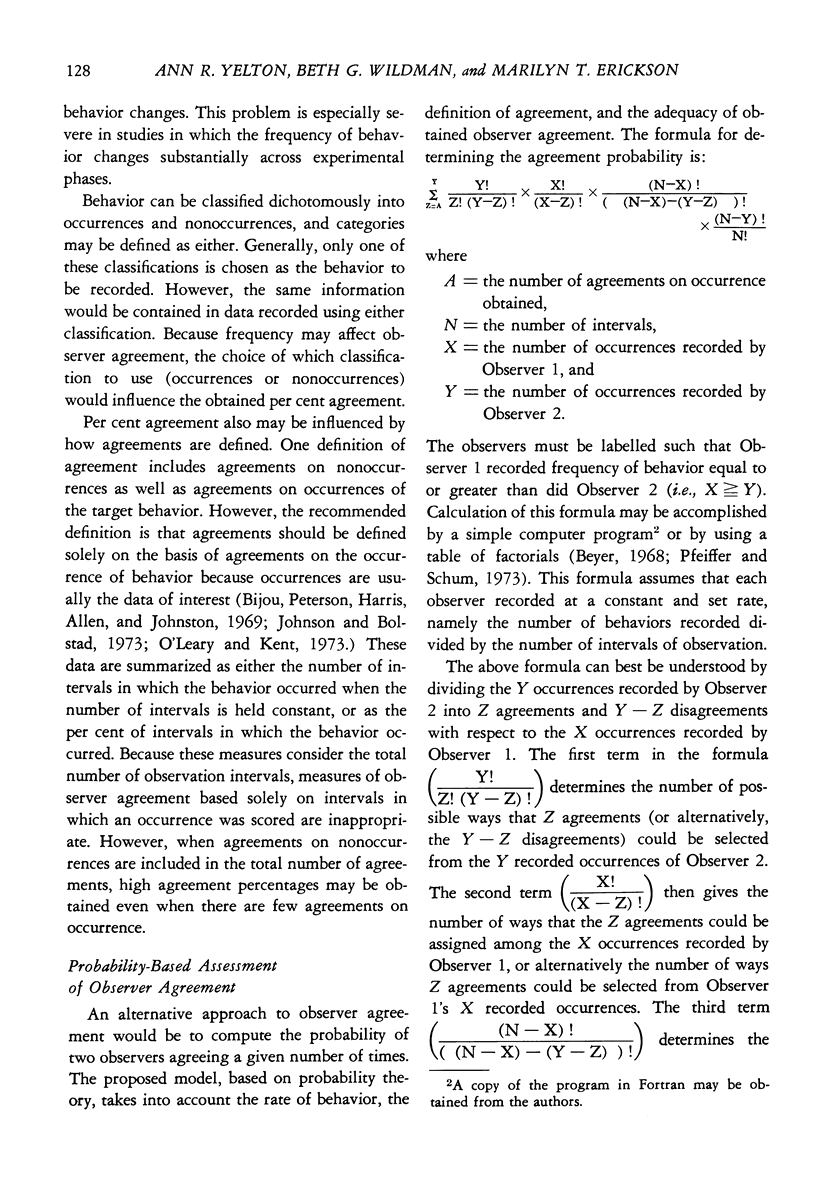
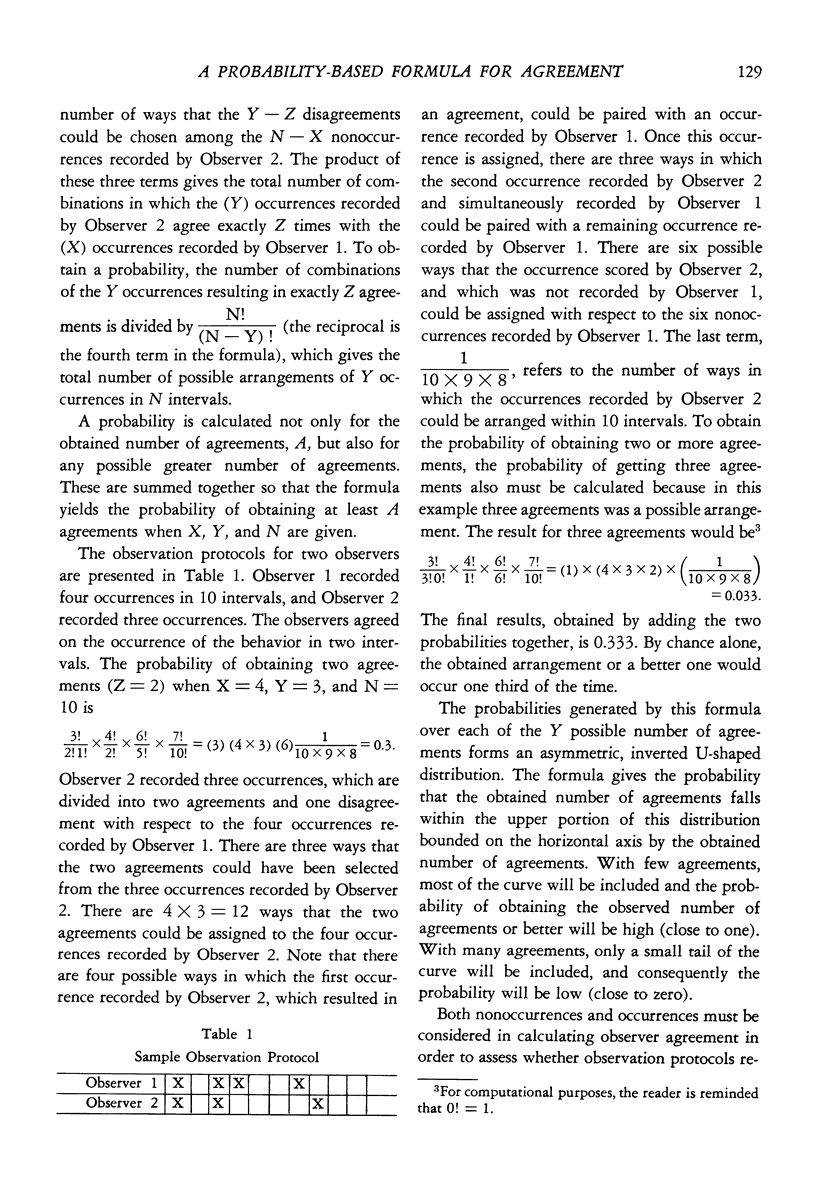
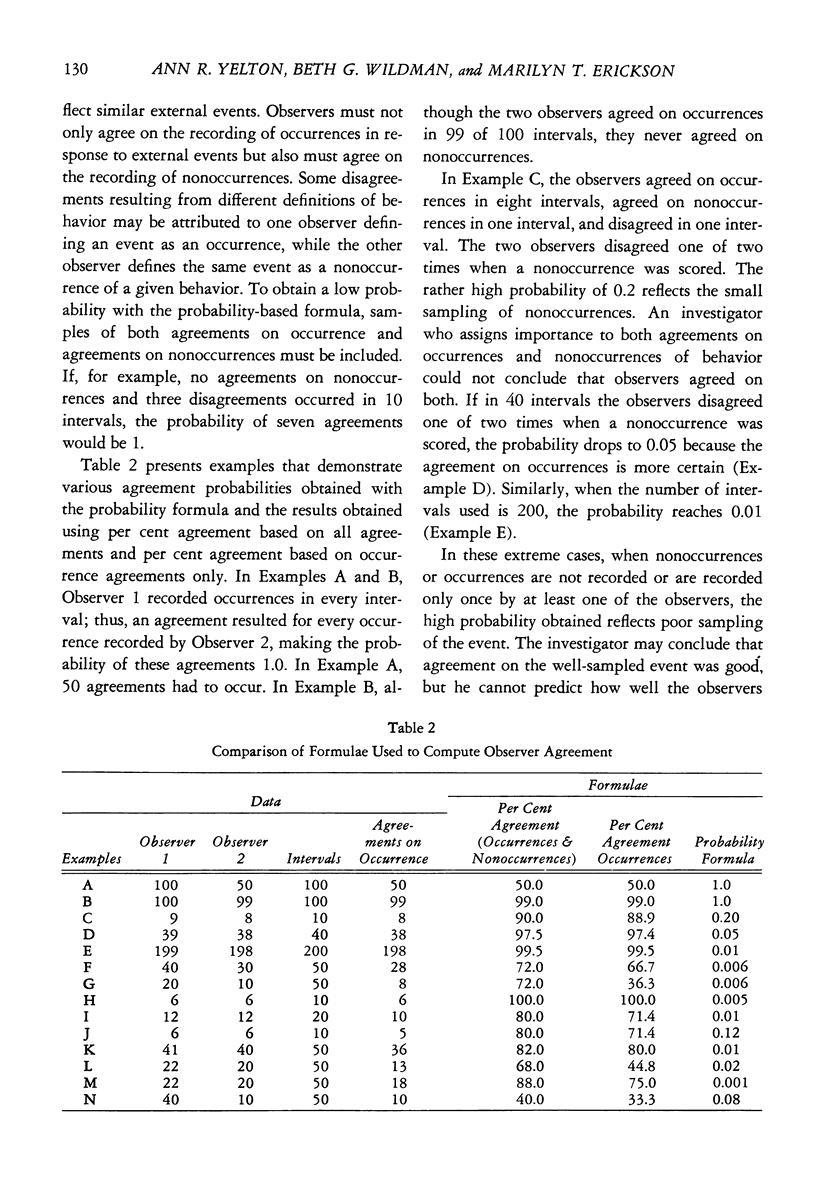
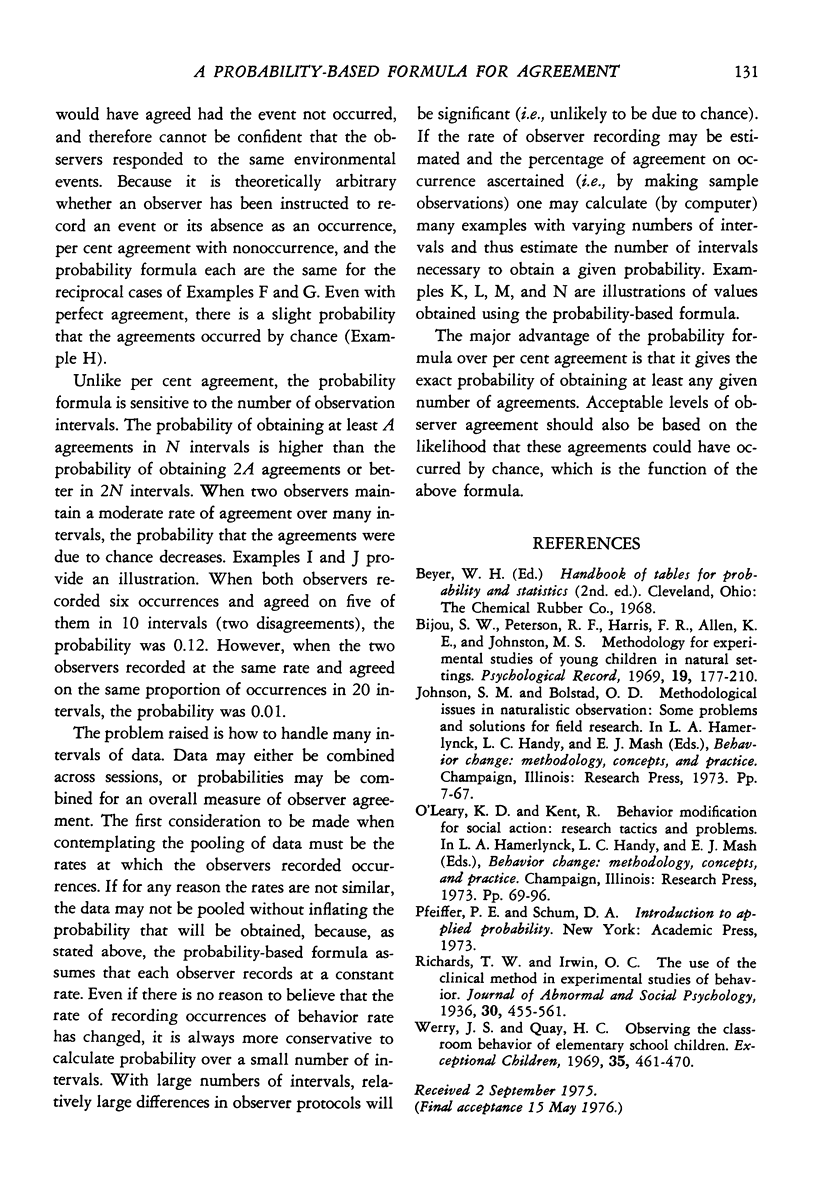
Selected References
These references are in PubMed. This may not be the complete list of references from this article.
- Werry J. S., Quay H. C. Observing the classroom behavior of elementary school children. Except Child. 1969 Feb;35(6):461–470. [PubMed] [Google Scholar]


